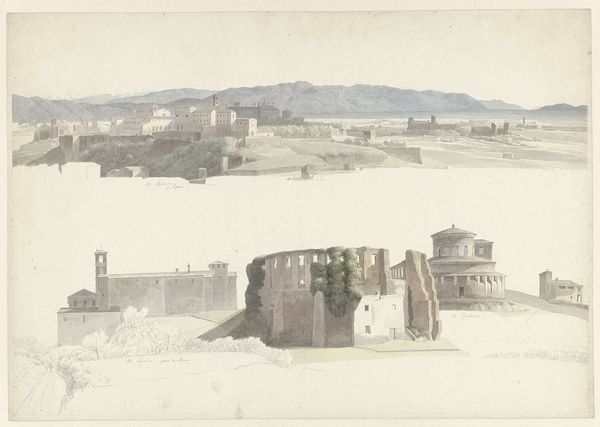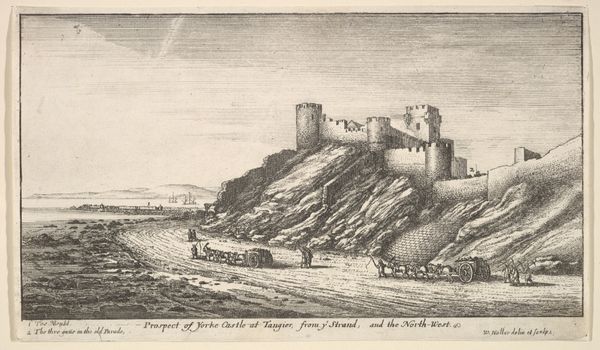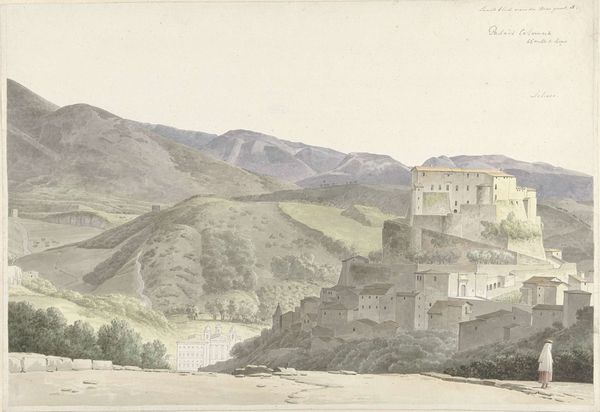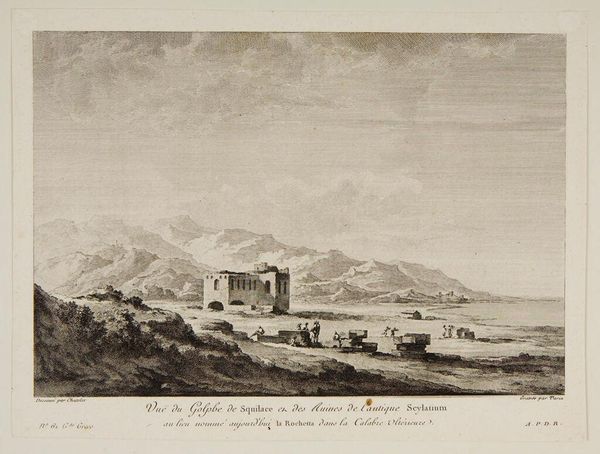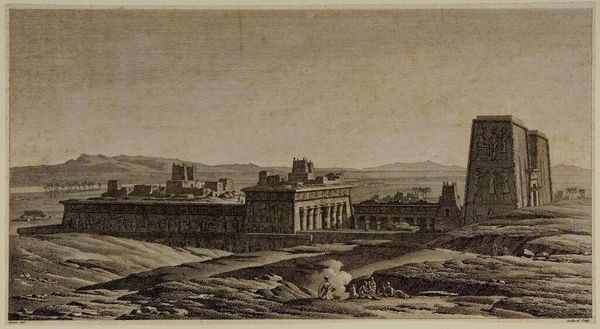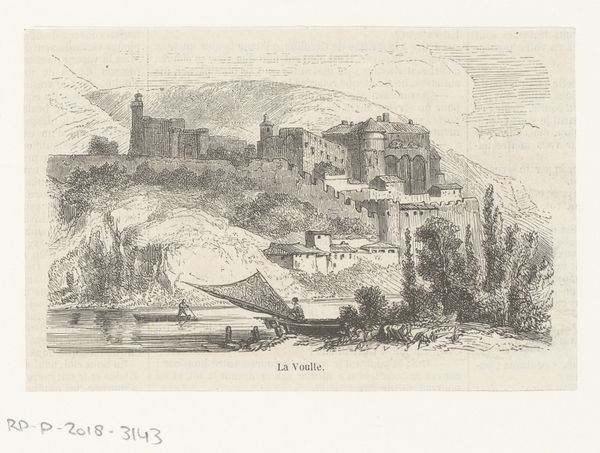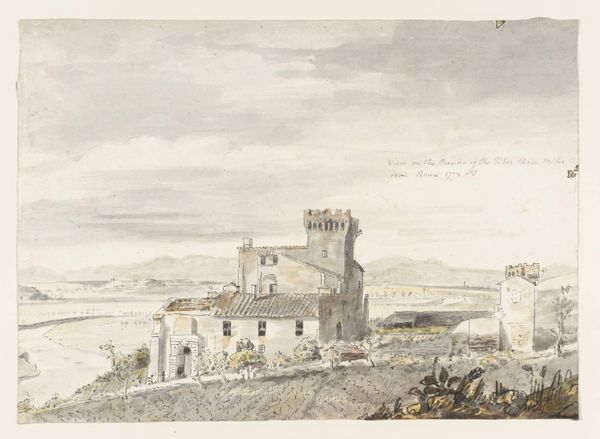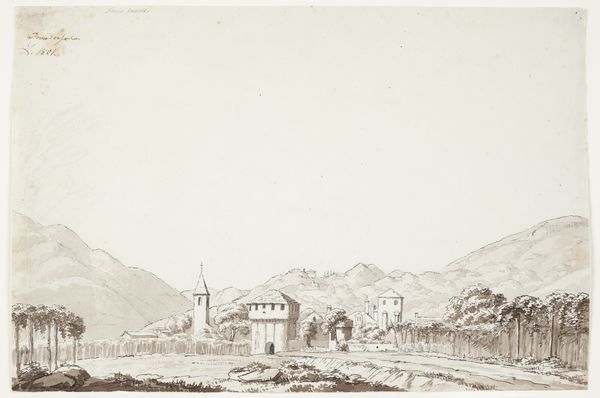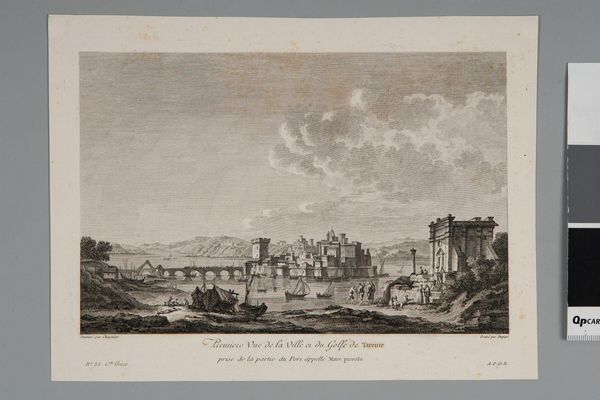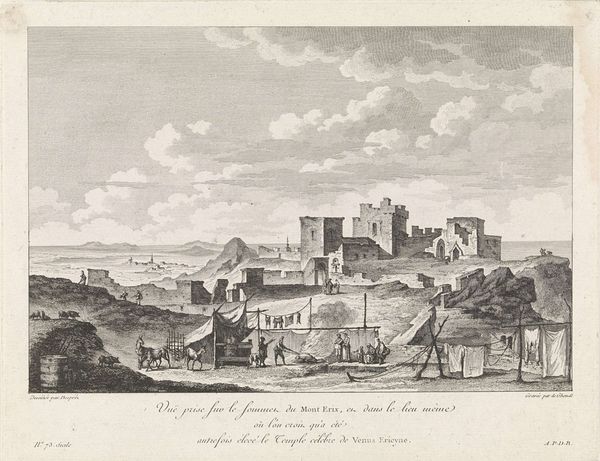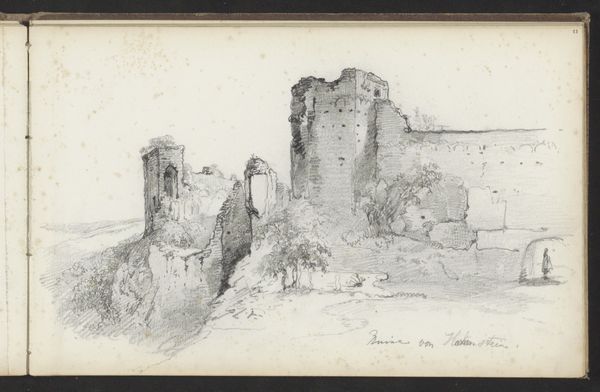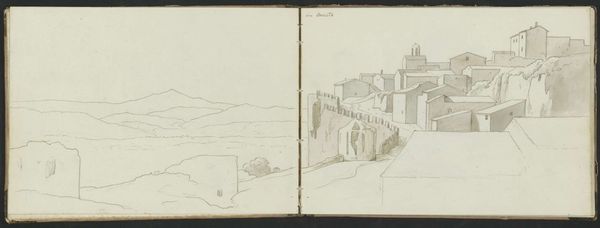
The Baths of Caracalla in Rome, with Frascati in the Distance c. 1809 - 1812
0:00
0:00
drawing, pencil
#
drawing
#
neoclacissism
#
landscape
#
pencil
#
cityscape
Dimensions: height 252 mm, width 431 mm
Copyright: Rijks Museum: Open Domain
Curator: This serene drawing is titled "The Baths of Caracalla in Rome, with Frascati in the Distance" and was rendered in pencil around 1809-1812 by Josephus Augustus Knip. Editor: It has an understated beauty. The limited tonal range lends a melancholic feel. The architecture and the hills melt into a shared horizon line. It almost feels like an elegy. Curator: Elegies are often celebrations of the past. Here, the classical subject matter invites us to reflect on Rome's imperial grandeur. It evokes that Neoclassical interest in recovering, and perhaps reimagining, antiquity. Editor: Absolutely. Observe how Knip organizes the architectural ruins in relation to the distant mountains, creating visual planes that pull the viewer deep into the scene. And that careful use of line! Look how much information he communicates with so few strokes of the pencil. The horizontal strokes of the mountain and plains work as an anchor that helps to communicate stability. Curator: Those distant mountains remind us that Frascati was favored by the Roman elite during antiquity as well as Knip's time, offering a landscape steeped in both historical and aesthetic value for generations. Frascati provided retreat. The Baths themselves provided recreation, a site for socializing... Editor: So there’s a narrative about refuge embedded in the very composition? Curator: I think so. Places where people gathered communally. But consider, too, what is not depicted: the people themselves. The absent figures can suggest loss, the impermanence of civilizations… Editor: I'm compelled by your insights into the imagery here. I was locked into the balance the receding planes provided to the viewer's eye, and did not extend it further, but indeed those very stylistic elements create an emotive understanding of place as memory, time, and narrative. Curator: We can interpret so much from Knip's choice of subject and his skillful execution of the work. The cultural significance and psychological space of the work truly opens itself up once the language of the visual is interpreted. Editor: Agreed. A superb confluence of artistry and cultural coding, rendered in such deceptively simple means.
Comments
rijksmuseum about 2 years ago
⋮
Above the hills in the background Knip wrote ‘Frascati’, a town just southeast of Rome. This thus must be a view of the Baths of Caracalla from the northwest, with the Porta Latina, one of the city gates in the Aurelian Wall, in the left background. In the middle foreground can be seen the basilica of Santa Balbina, adjacent to a medieval monastery.
Join the conversation
Join millions of artists and users on Artera today and experience the ultimate creative platform.
